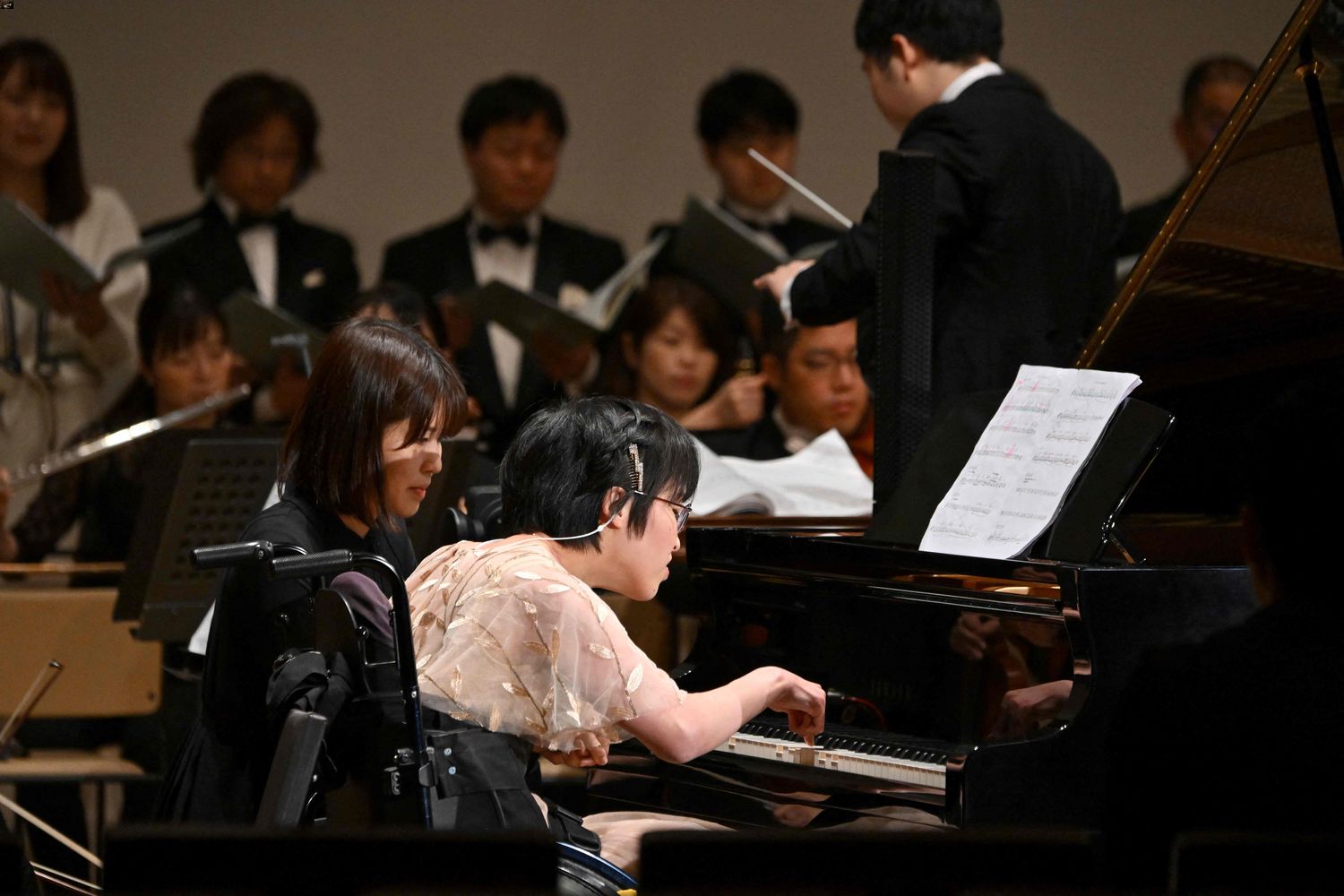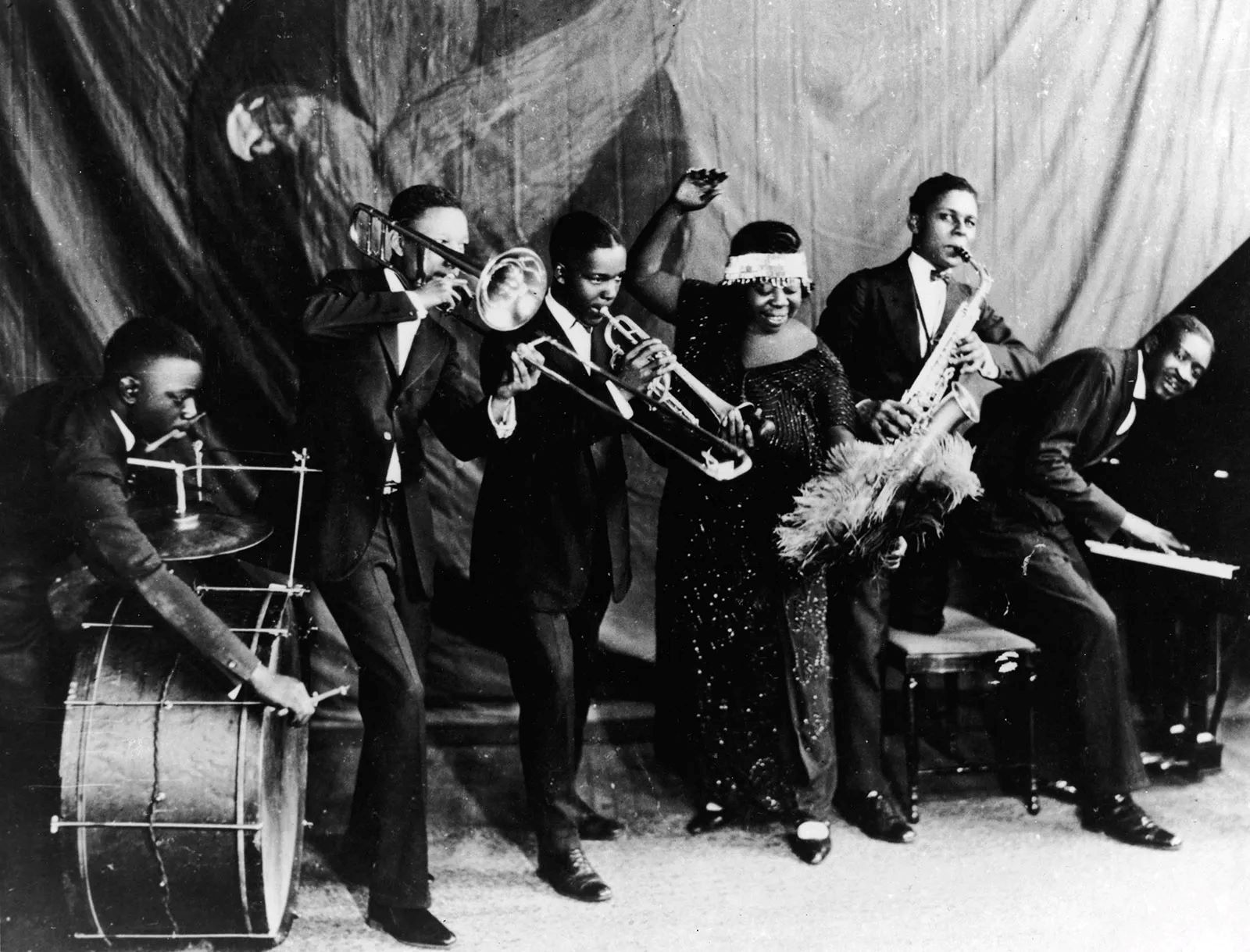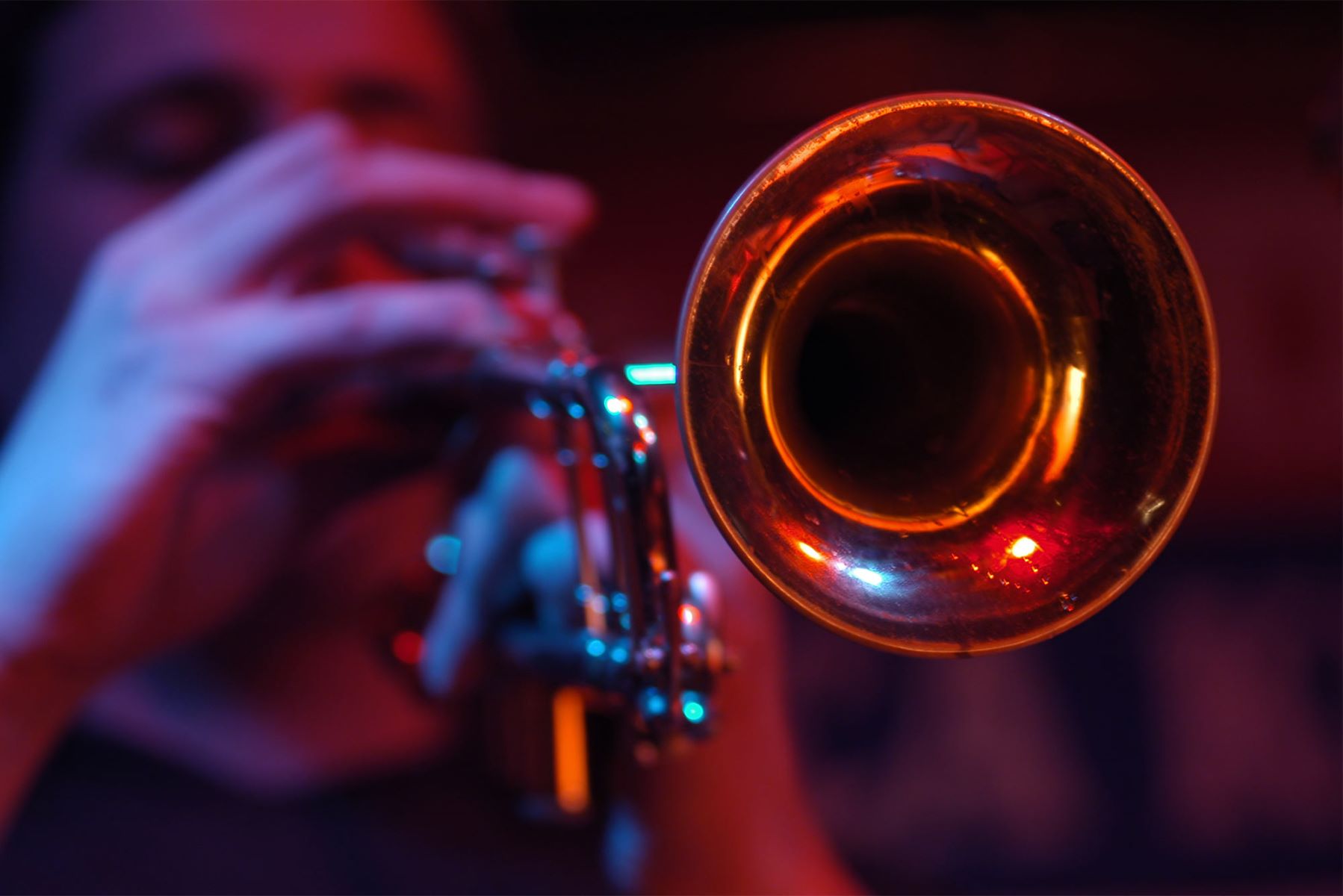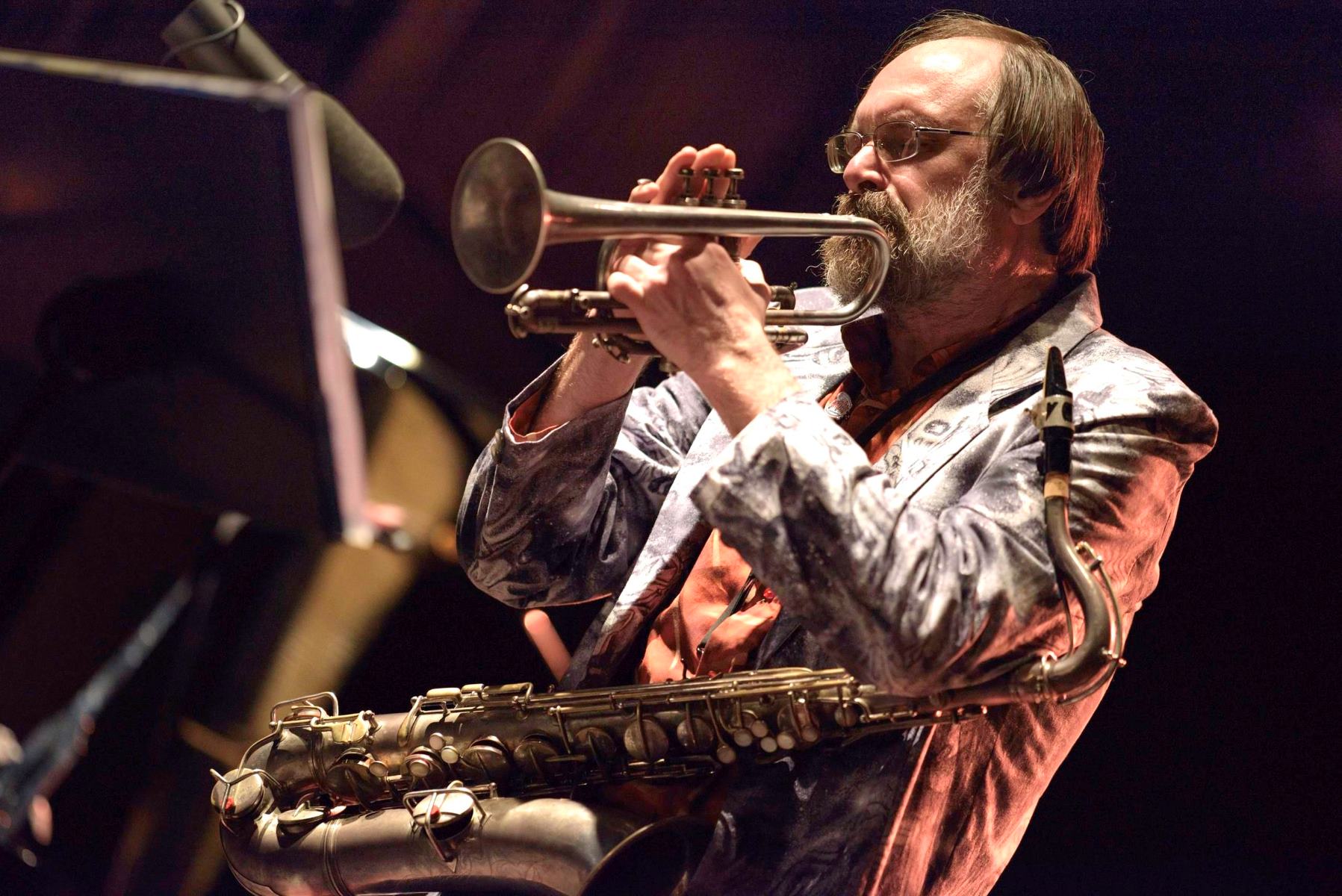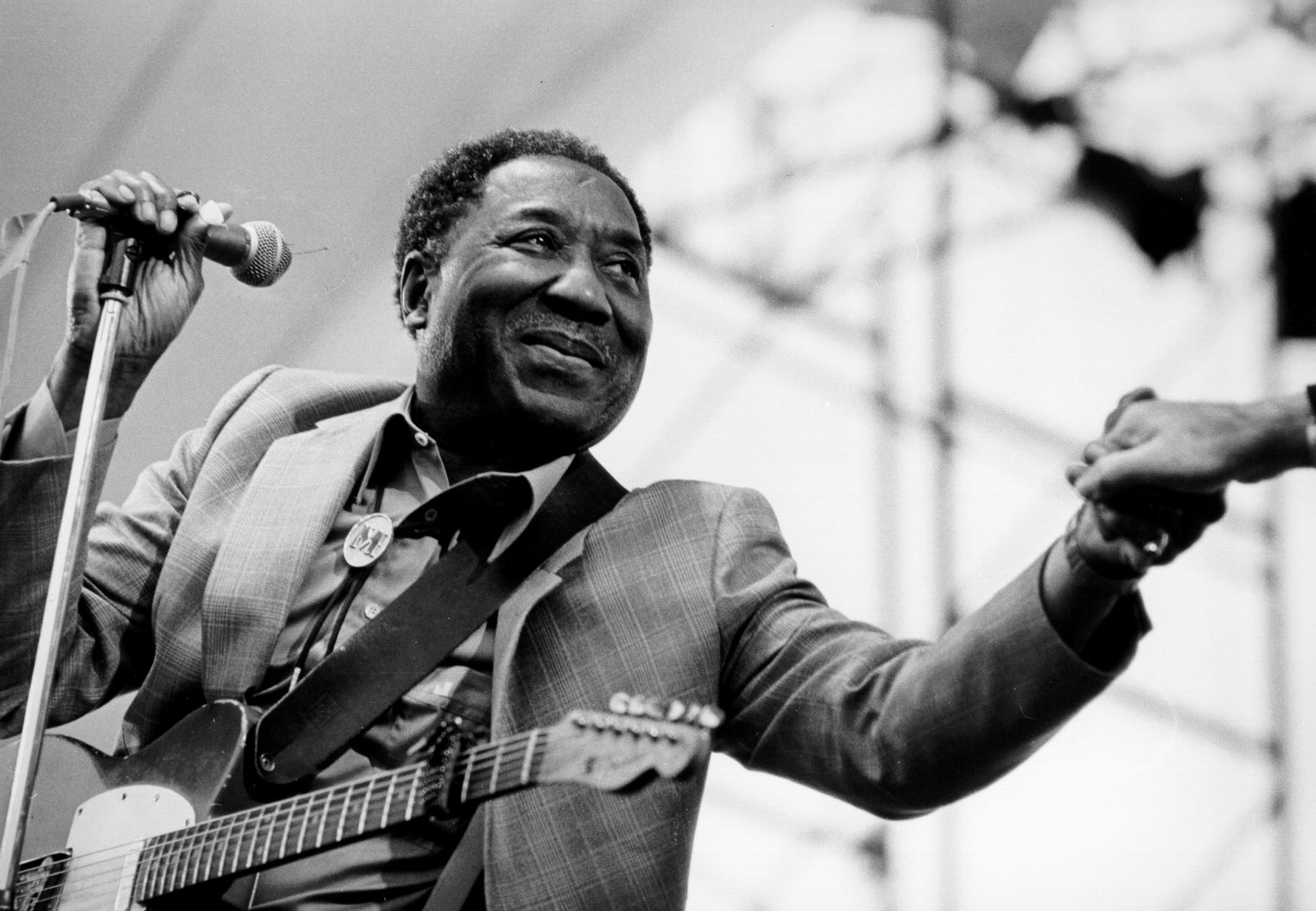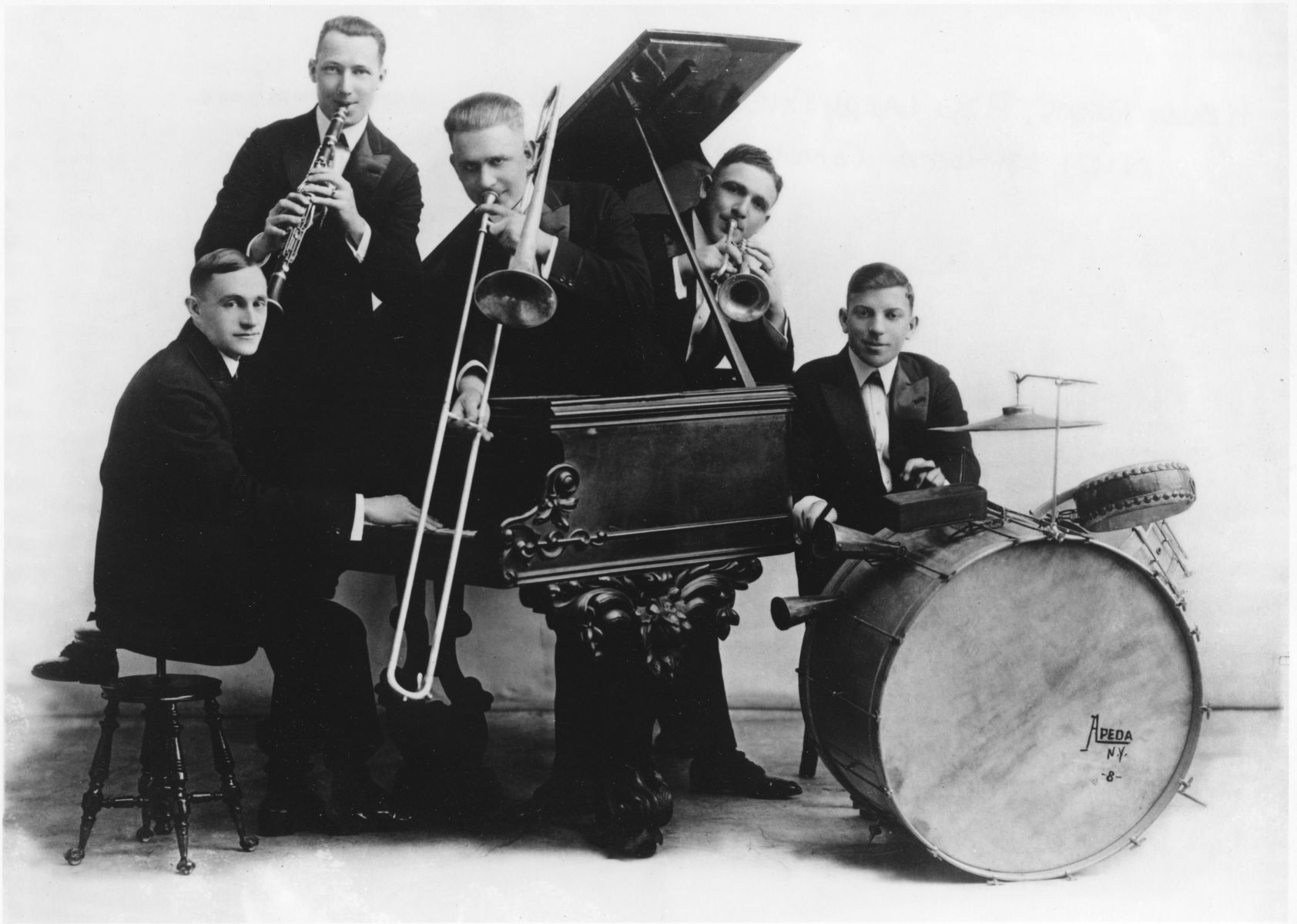

Jazz
When Did Dixieland Jazz Start
Modified: January 22, 2024
Explore the origins of Dixieland jazz and its evolution throughout history. Learn when this iconic genre of music, rooted in African-American traditions, first emerged and how it continues to shape the jazz landscape today.
(Many of the links in this article redirect to a specific reviewed product. Your purchase of these products through affiliate links helps to generate commission for AudioLover.com, at no extra cost. Learn more)
Table of Contents
Introduction
Dixieland jazz, a vibrant and energetic genre of music that emerged in the early 20th century, has a rich and fascinating history. With its roots deeply embedded in the African American communities of the South, Dixieland jazz evolved from a blend of various musical traditions, resulting in a distinctive and lively sound.
This unique style of jazz gained popularity in the early 1900s and has since captivated listeners around the world. Its infectious rhythms, improvisation, and collective improvisation have made it a beloved genre among enthusiasts and played a significant role in shaping the history of jazz.
In this article, we will delve into the origins, influences, emergence, key characteristics, spread, and evolution of Dixieland jazz. By exploring its rich heritage, we aim to provide a comprehensive understanding of this iconic genre and highlight its enduring legacy.
So, join us on this musical journey as we explore the colorful and influential world of Dixieland jazz.
Origins of Dixieland Jazz
The origins of Dixieland jazz can be traced back to the early 20th century in the Southern United States, particularly in the African American communities of New Orleans. This vibrant and culturally diverse city served as a melting pot for various musical traditions, including African rhythms, European military band music, hymns, and blues.
The African musical traditions, brought to America through the transatlantic slave trade, laid the foundation for the syncopated rhythms and improvisational nature of Dixieland jazz. These rhythmic patterns, coupled with the influence of European instrumentation and harmony, resulted in a unique and dynamic fusion of musical elements.
Furthermore, the cultural diversity of New Orleans played a crucial role in shaping this genre. The city was a vibrant mix of African, French, Spanish, and Caribbean cultures, creating a lively and eclectic atmosphere that fueled artistic expression. Musicians from different backgrounds and traditions would interact and collaborate, further influencing the development of Dixieland jazz.
Notable figures such as Buddy Bolden, Jelly Roll Morton, and Louis Armstrong played a pivotal role in popularizing and refining the early sounds of Dixieland jazz. These talented musicians incorporated their own personal styles and techniques, contributing to the evolution and distinctiveness of the genre.
It is important to note that the term “Dixieland” originally referred to the Southern United States, particularly the states that comprised the Confederate South during the American Civil War. The use of the term in relation to jazz can be attributed to the popularity of the Original Dixieland Jass Band, a white ensemble that recorded some of the first commercially successful jazz records in 1917.
While the origins of Dixieland jazz are deeply rooted in the rich musical heritage of New Orleans, the genre gradually spread and adapted as it gained popularity throughout the United States and beyond. This expansion and transformation would help shape the future of jazz as a whole.
Early Influences on Dixieland Jazz
Dixieland jazz, as a genre, was heavily influenced by a diverse range of musical traditions that were prevalent during its early development. These influences played a crucial role in shaping the unique characteristics and sound of Dixieland jazz.
African Rhythms: African rhythms and musical traditions served as a fundamental building block for Dixieland jazz. The syncopated rhythms, polyrhythms, call and response patterns, and improvisation techniques that originated from African music were seamlessly integrated into the emerging jazz style. These African rhythms added a distinct flavor and energy to the music, driving its infectious groove.
European Military Band Music: The presence of European military bands in New Orleans during the late 19th and early 20th centuries had a significant influence on the instrumentation and ensemble structure of Dixieland jazz. The use of brass instruments, such as the trumpet, trombone, and clarinet, along with the rhythm section of drums, bass, and piano, reflected the influence of European marching bands. These instruments and ensembles would become the backbone of Dixieland jazz.
Hymns and Spirituals: As a city with a strong religious background, New Orleans was rich in hymns and spirituals. The haunting melodies, emotional intensity, and harmonies of these sacred songs found their way into the repertoire of early jazz musicians. The incorporation of these hymns and spirituals added depth and soulfulness to the music, creating a powerful connection with the audience.
Blues: The blues, which emerged from African American communities in the South, also played a significant role in shaping Dixieland jazz. The blues added a raw and emotional element to the music, with its expressive melodies and lyrical themes. Many early jazz musicians were adept at blending blues elements into their improvisations and compositions, creating a rich tapestry of sound.
These early influences set the stage for the birth of Dixieland jazz, providing a diverse palette of musical elements for musicians to draw from. The fusion of these various traditions resulted in a distinct and vibrant sound that continues to resonate with audiences today. As we explore the emergence of the first Dixieland jazz bands, we will witness how these influences came together in a groundbreaking and revolutionary manner.
Emergence of the First Dixieland Jazz Bands
The emergence of the first Dixieland jazz bands marked a seismic shift in the music landscape. These pioneering groups, consisting of talented musicians from New Orleans, showcased the infectious energy and improvisational spirit that defined the genre.
One of the most influential and notable early Dixieland jazz bands was the Original Dixieland Jass Band, formed in 1916. This all-white ensemble gained immense popularity and recognition when they recorded the first jazz recording in history, “Livery Stable Blues,” in 1917. The band’s spirited performances and lively compositions helped introduce Dixieland jazz to a wider audience.
Another prominent figure in the emergence of Dixieland jazz was cornetist Buddy Bolden. Though no known recordings of his music exist, Bolden’s live performances in the early 1900s were legendary and highly influential. His bold and brassy playing style, coupled with his skilled improvisation, set the foundation for the improvisational nature of Dixieland jazz.
Jelly Roll Morton, a pianist and composer, also played a significant role in the early development of Dixieland jazz. Morton’s compositions, such as “Black Bottom Stomp” and “King Porter Stomp,” showcased his intricate arrangements and distinctive piano playing. His contributions to Dixieland jazz expanded the boundaries of the genre and added a touch of sophistication.
However, it is important to acknowledge the immense influence and contribution of African American musicians who played a crucial role in the birth of Dixieland jazz. The segregation and racial tensions of the time led to a divide in the recognition and opportunities afforded to African American musicians compared to their white counterparts. Nevertheless, their impact and artistry were unmistakable.
Leading African American musicians such as Louis Armstrong, King Oliver, and Sidney Bechet were instrumental in shaping the sound and style of Dixieland jazz. Louis Armstrong, in particular, emerged as one of the most iconic and influential figures in the genre. His innovative trumpet playing, soulful vocals, and charismatic stage presence revolutionized jazz and paved the way for future generations of musicians.
The emergence of these pioneering Dixieland jazz bands marked a turning point in the history of jazz. Their innovative approach to improvisation, ensemble playing, and energetic performances set the stage for the genre’s future evolution and cemented Dixieland jazz as a significant musical movement.
Key Characteristics of Dixieland Jazz
Dixieland jazz is known for its lively and exuberant style, captivating audiences with its infectious energy and distinctive characteristics. Understanding the key elements that define Dixieland jazz can provide deeper appreciation for this genre.
Collective Improvisation: One of the defining features of Dixieland jazz is its emphasis on collective improvisation. Unlike other jazz styles where soloists take center stage, Dixieland jazz encourages all members of the ensemble to improvise together, creating a vibrant and interactive musical dialogue. This sense of collaboration and spontaneity adds to the dynamic and communal spirit of the music.
Syncopation and Swing: Dixieland jazz is characterized by its syncopated rhythms, which create a driving and swinging feel. Syncopation involves accenting off-beat notes or placing accents in unexpected places, adding a layer of complexity and excitement to the music. The rhythmic interplay between various instruments and the rhythm section contributes to the lively and energetic nature of Dixieland jazz.
Frontline Instruments: The frontline of a Dixieland jazz band typically consists of trumpet, trombone, and clarinet. These instruments take on melodic and improvisational roles, often engaging in spirited back-and-forth exchanges. The interplay between these instruments creates a distinctive and vibrant sound, with each musician contributing their unique voice to the mix.
Hot Solos: While collective improvisation is a hallmark of Dixieland jazz, the genre also allows for individual musicians to take captivating solo moments. These “hot solos” provide an opportunity for each performer to showcase their skills and express their musical personality. The improvisational prowess and virtuosity displayed in these solos add excitement and variety to the music.
Call and Response: Another characteristic of Dixieland jazz is the use of call and response patterns. This technique involves one musician playing a short phrase or melody, followed by another musician or the full ensemble responding with their own musical statement. This back-and-forth exchange creates a vibrant and interactive conversation within the music.
Upbeat Tempo: Dixieland jazz typically features fast tempos that propel the music forward with energy and momentum. This brisk pace contributes to the lively and joyous nature of the genre, inviting listeners to tap their feet, dance, and join in the festive atmosphere.
These key characteristics collectively define the vibrant and spirited nature of Dixieland jazz. The combination of collective improvisation, syncopation, frontline instruments, hot solos, call and response, and upbeat tempos create an irresistible and exhilarating musical experience.
Spread and Popularization of Dixieland Jazz
After its emergence in New Orleans, Dixieland jazz quickly gained popularity and began to spread beyond its birthplace. The vibrant and infectious nature of the music captured the hearts of listeners, leading to the genre’s widespread adoption and popularity.
One of the key factors contributing to the spread of Dixieland jazz was the advent of phonograph recordings and radio broadcasting. These technological advancements allowed for the dissemination of jazz recordings and live performances to a wider audience. The ability to hear Dixieland jazz in the comfort of one’s own home enabled its popularity to grow exponentially.
As Dixieland jazz gained traction, many musicians and bands traveled to other cities and regions, spreading the sound throughout the United States. New Orleans, as the birthplace of the genre, continued to be an important hub for showcasing and cultivating Dixieland jazz talent. However, major cities such as Chicago, New York, and San Francisco also became hotspots for the genre’s development and popularity.
In Chicago, the influence of Dixieland jazz was evident in the music of the Austin High Gang, a group of young white musicians who drew inspiration from the sounds of New Orleans. Their recordings and performances helped solidify Dixieland jazz as a distinct style within the larger jazz landscape. Additionally, the influential jazz journalist and promoter, John Hammond, played a crucial role in popularizing Dixieland jazz by organizing live concerts and recording sessions featuring prominent Dixieland jazz musicians.
The popularity of Dixieland jazz also extended beyond the borders of the United States. European audiences, enamored by the lively and infectious nature of the music, embraced Dixieland jazz with enthusiasm. British musicians in particular, such as Chris Barber and Humphrey Lyttelton, championed the genre and helped introduce it to a broader audience in Europe. The popularity of Dixieland jazz in Europe eventually led to the formation of numerous traditional jazz festivals, which continue to showcase the genre to this day.
Interestingly, while Dixieland jazz peaked in popularity during the 1920s and 1930s, it experienced a resurgence in the 1950s and 1960s. This revival was led by musicians like Louis Armstrong, who brought the Dixieland jazz sound to new heights with their modern interpretations and innovative arrangements. The genre’s popularity has endured through the decades, with Dixieland jazz still being performed and celebrated in jazz festivals, clubs, and concerts worldwide.
The spread and popularization of Dixieland jazz can be attributed to its vibrant and engaging sound, as well as the passion and dedication of the musicians who continue to champion the genre. Through recordings, live performances, and the enthusiasm of jazz enthusiasts, Dixieland jazz has earned its place as one of the most beloved and enduring styles of jazz music.
Evolution and Legacy of Dixieland Jazz
Over the years, Dixieland jazz has undergone various transformations and adaptations, while still retaining its core characteristics and spirit. The genre’s evolution has seen it infuse and intertwine with other jazz styles, contributing to its lasting legacy.
In the 1930s and 1940s, as jazz continued to evolve, new styles such as swing and bebop emerged, challenging the prominence of Dixieland jazz. However, the genre found a resurgence in the 1950s and 1960s, thanks to the efforts of jazz musicians who sought to revive and reinterpret the Dixieland sound. Notable figures like Louis Armstrong, Duke Ellington, and Sidney Bechet bridged the gap between traditional jazz and modern innovations, keeping Dixieland jazz relevant to new audiences.
During the mid-20th century, Dixieland jazz underwent a fusion with other jazz styles, giving rise to subgenres such as “New Orleans Revival” and “Chicago Dixieland.” These variations incorporated elements of swing, blues, and even elements of modern jazz, providing a fresh take on the traditional Dixieland sound.
The legacy of Dixieland jazz is also evident in the formation of jazz groups specifically dedicated to preserving and performing this style of jazz. The Preservation Hall Jazz Band in New Orleans, founded in 1961, stands as a testament to the enduring influence of Dixieland jazz. This band, composed of seasoned musicians who have dedicated their lives to the genre, continues to captivate audiences with their timeless renditions of Dixieland classics.
Furthermore, Dixieland jazz has left an indelible mark on the larger jazz tradition. The rhythmic complexity, lively improvisations, and collective spirit that define Dixieland jazz have influenced subsequent jazz styles and continue to shape the way musicians approach their craft. Elements of Dixieland jazz can be found in the repertoire of modern traditional jazz bands and even in contemporary jazz fusion projects.
The enduring popularity of Dixieland jazz is evident in the numerous jazz festivals, concerts, and clubs around the world that feature the genre. From the annual French Quarter Festival in New Orleans to the Sacramento Music Festival in California, Dixieland jazz continues to entertain and inspire audiences of all ages and backgrounds.
Overall, the evolution and legacy of Dixieland jazz is a testament to its enduring appeal and relevance. Rooted in the rich musical traditions of New Orleans and embodying the joy, improvisation, and collective spirit of jazz, Dixieland jazz remains a vibrant and influential genre that continues to inspire and be celebrated by musicians and fans alike.
Conclusion
Dixieland jazz, with its infectious rhythms, collective improvisation, and vibrant spirit, has left an indelible mark on the world of music. Emerging from the rich cultural heritage of New Orleans, this genre brought together a diverse range of influences, including African rhythms, European military band music, hymns, and blues, to create a unique and distinct sound.
The origins and early development of Dixieland jazz were characterized by the pioneering work of musicians like Buddy Bolden, Jelly Roll Morton, and the Original Dixieland Jass Band. Their innovative playing styles, recordings, and performances helped popularize the genre and set the stage for its future growth.
The key characteristics of Dixieland jazz, such as collective improvisation, syncopation, frontline instruments, and call and response patterns, contribute to its energetic and lively nature. Dixieland jazz has not only spread throughout the United States but has also gained international recognition, captivating audiences around the world.
Despite facing challenges and shifting musical trends over the years, Dixieland jazz has continued to evolve and maintain its relevance. It has fused with other jazz styles, experienced revivals, and influenced subsequent generations of jazz musicians.
The enduring legacy of Dixieland jazz is evident in its impact on the larger jazz tradition, as well as in the dedicated musicians and jazz bands who strive to preserve and perform this genre. Its vibrant and exuberant sound continues to entertain and inspire audiences in jazz festivals, clubs, and concerts worldwide.
As we celebrate the legacy of Dixieland jazz, it is important to recognize the significant role it has played in shaping the world of music. From its humble beginnings in the streets of New Orleans to its influence on jazz and beyond, Dixieland jazz stands as a testament to the power of creativity, collaboration, and cultural exchange.
So, let us embrace the spirit of Dixieland jazz and allow its timeless music to transport us to a joyous and lively world where the spirit of improvisation and collective expression reign supreme.

